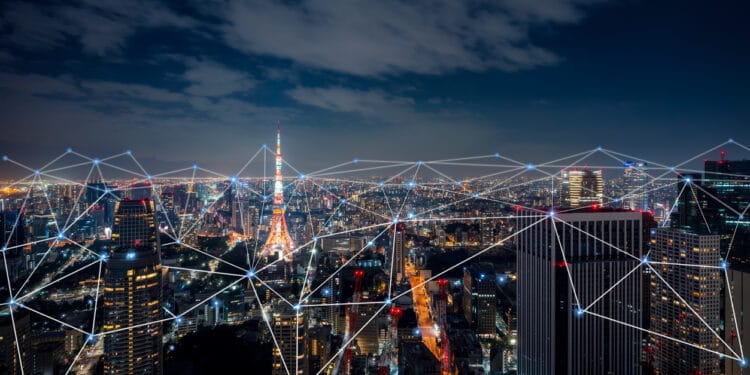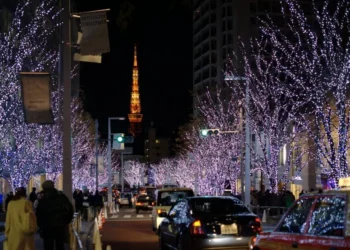No products in the cart.
Tokyo’s Path to Becoming a Smart City Through AR Technology
Introduction
Tokyo has long been viewed as a futuristic city, often portrayed in popular media as the pinnacle of modern urban life. With the rapid development of augmented reality (AR) technology, Tokyo has an unprecedented opportunity to leverage this reputation and transform into a genuine “smart city.” A city that seamlessly integrates advanced technology to improve the quality of life for its residents, streamline its systems, and provide futuristic experiences to its visitors. However, achieving this vision involves overcoming significant technological, regulatory, and societal challenges. This article explores what it would take for Tokyo to become a true smart city and how AR could play a transformative role in this journey.
What Makes a Smart City?
A smart city uses digital technologies to enhance urban services, making them more efficient and accessible. At the core of a smart city are tools like the Internet of Things (IoT), big data analytics, and artificial intelligence (AI), which can streamline transportation, energy management, healthcare, and public safety. By leveraging AR, Tokyo has the potential to take smart city concepts even further. AR could turn routine activities into more interactive, informative experiences, helping Tokyo realize the futuristic image the world associates with it.
In practice, a smart city is about connectivity and efficient resource use. For Tokyo, a densely populated metropolis with complex infrastructure, AR could offer tools to reduce congestion, provide real-time information to citizens, and improve resource allocation through immersive, data-driven experiences. From navigating bustling train stations to managing electricity in real-time, AR could help Tokyo streamline its systems and provide smarter solutions to urban problems.
Potential AR Applications in Tokyo
1. Enhanced Transportation Systems
Tokyo’s public transportation system is one of the most complex and busiest in the world, with over 14 billion passengers each year. The city could leverage AR to provide real-time navigation and information for users. For example, through AR-enabled smartphones or smart glasses, travelers could receive navigation assistance in crowded areas like Shinjuku Station. Such technology could project real-time information about train schedules, delays, and even recommend the best car to board based on congestion levels.
Using AR for transportation could also benefit tourists who are unfamiliar with Tokyo’s layout. Instead of relying on static maps or smartphone apps, AR could guide tourists in real-time, overlaying instructions onto their surroundings. Beyond public transit, AR could facilitate the navigation of Tokyo’s labyrinthine streets, where traditional maps can be challenging to follow.
2. Data-Rich Urban Exploration
Tokyo is known for its vibrant districts like Shibuya, Ginza, and Akihabara, each bustling with shops, restaurants, and entertainment. With AR, visitors could explore these neighborhoods more interactively. AR could overlay historical or cultural information on buildings and landmarks, enhancing the city’s tourism sector. Tourists could point their devices at a landmark and instantly learn about its history, opening hours, or even special offers in nearby businesses.
This immersive experience would create a more dynamic relationship between Tokyo’s infrastructure and its people, blending physical and digital realities. Additionally, locals could use AR to stay updated on city events or community news, turning the city itself into an interactive network.
3. Smart Energy Management
Tokyo, with its vast infrastructure, faces substantial energy demands. Through AR, utility companies could gain real-time insights into energy use across different sectors, enabling them to allocate resources more effectively. For residents, AR could display energy consumption data, encouraging more efficient energy use. Tokyo could further benefit from AR applications that inform users about nearby recycling centers, trash collection points, or energy-saving programs.
In collaboration with IoT and big data analytics, AR could transform the way Tokyo manages its resources. For example, workers could use AR to assess infrastructure conditions remotely, avoiding unnecessary trips and focusing on areas that require immediate attention.
4. Public Safety and Disaster Preparedness
Tokyo’s geographic location makes disaster preparedness crucial. AR could offer enhanced solutions for emergency response and preparation, such as real-time evacuation route mapping and guidance for citizens during earthquakes or typhoons. In an emergency, AR could guide people to the nearest shelter, provide real-time updates on the situation, and give instructions on essential safety measures.
For a city prone to natural disasters, these AR features would make Tokyo safer and more resilient. Furthermore, AR could assist emergency responders by overlaying critical information on buildings, helping them identify high-risk areas and expedite their response.

Challenges to Becoming a Smart City with AR
While AR offers exciting possibilities, there are also considerable challenges to its widespread adoption in Tokyo.
1. Infrastructure and Connectivity
To support AR on a large scale, Tokyo would need to improve its digital infrastructure, especially in terms of 5G networks. Although Tokyo is actively rolling out 5G, full implementation is still a work in progress. AR’s reliance on real-time data and precise positioning demands a robust network, which will require significant investment.
2. Privacy Concerns
With AR technology constantly collecting and analyzing data, privacy is a significant concern. AR systems that collect location and behavior data could face scrutiny, especially in a country where personal privacy is highly valued. Tokyo’s transition to a smart city will require strict regulations and transparent policies to protect citizens’ privacy.
3. Cost and Implementation
AR infrastructure is costly, and building the necessary systems for a smart city requires substantial funding. Japan’s current debt levels may limit its ability to fund such projects without private sector support. In addition, training personnel to operate and maintain AR technologies would require further investment, especially in terms of cybersecurity and technical expertise.
4. Public Adoption and Usability
For Tokyo to succeed as a smart city, citizens need to adopt and feel comfortable with AR technologies. If AR interfaces are difficult to use or don’t offer clear benefits, the public may be slow to embrace them. Japan’s aging population also presents unique challenges, as older residents might be less inclined to use advanced digital tools. Ensuring accessibility and user-friendly design for all demographics is essential.
The Road Ahead: Future Prospects for Tokyo
Tokyo’s journey to becoming a true smart city will depend on a combination of cutting-edge technology, sound policy, and public acceptance. While AR offers transformative possibilities, Tokyo’s success will rely on effectively addressing the challenges mentioned above. Collaboration between the public and private sectors, along with partnerships with tech innovators, can help Tokyo bridge the gap between vision and reality.
As AR continues to evolve, its potential to reshape Tokyo is promising. The fusion of digital and physical experiences would create a unique urban environment where information is instantly accessible, and services are optimized to meet citizens’ needs. Tokyo has a rich legacy of blending tradition with technology, and AR could be the next frontier in that evolution, making it a smart city that inspires the world.
By addressing these challenges, Tokyo could indeed transform into a city of the future, one where AR technology enables safer, more efficient, and more engaging urban living for all its residents.










